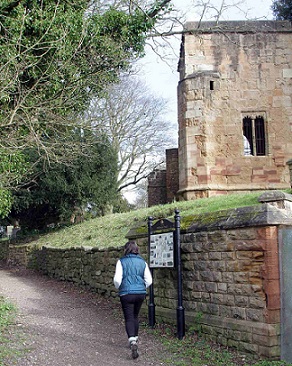Annesley Old Church
Annesley Old Church is a medieval building, which fell into disuse after a new church, All Saints Church was opened in 1874 a mile away, to accommodate the growing mining community.
The Old Church can be found on the A608 Mansfield Road, just off Junction 27 of the M1 at Annesley.
Apart from the main outer walls and tower, other features surviving are the three-seat sedilia (priest’s chair) and two piscinae (for washing communion vessels). Monuments from the old church have been restored and are on display in the new church.

The romantic ruins of this historic church and churchyard, which are registered as a Scheduled Ancient Monument, offer an idyllic location overlooking Annesley Hall (not open to the public) and park. The grade II* listed park is nestled in the midst of Annesley Forest, where you can find the site of a former Mott and Bailey castle.
The church is a Grade 1 listed building, inside the church and adjoining graveyard many members of the Chaworth-Muster family are buried, who lived in the hall.
We own the old church property and with Heritage Lottery Funding carried out a project to preserve the building for generations to come. The church is mentioned by D. H. Lawrence book The White Peacock. Lord Byron was a regular visitor to the hall and church, views of Annesley Park can be seen from nearby Diadem Hill – the assumed location of Byron’s poem The Dream. Annesley; “Where my thoughtless childhood stray’d …” as Byron wrote and was an inspiration for much of his work.
The church and churchyard are open all year round for visitors to enjoy the serene atmosphere and extensive rural views across Annesley Park. The site is managed to encourage many varieties of wild flowers along with the attraction of the more unusual species of birds.
Annesley Hall, which is in private ownership, dates from the 17th Century but was much added to in the 19th Century. It has witnessed many historical events including the romance of Lord Byron and Mary Chaworth, but became derelict after the family moved to Felley Priory during the 1970s.
